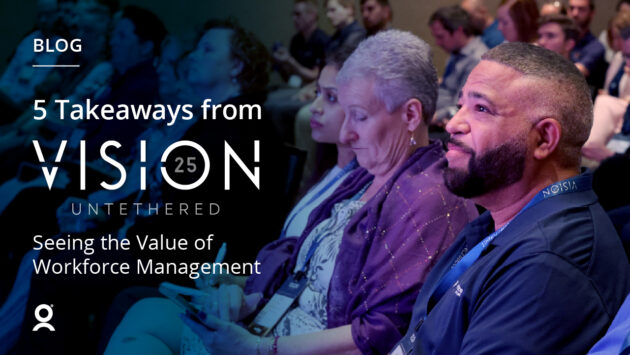High turnover disrupts productivity and bears significant costs for a business. There are always a range of reasons that an employee leaves their role, but a high turnover rate is a symptom of a disconnect between employee expectations and what employers provide.
Our Third Annual Global Employee Experience Study offers a picture of the difference in perception on the delivery of work experience between employees and employers within their organizations. Our findings reveal that while there is greater alignment in these perceptions compared to previous years, workers increasingly view high quality workforce experience as essential.
The modern workforce values continuous improvement, positive work environments, and recognition, and they are willing to seek out employers who meet these needs. As businesses compete for top talent, addressing the root cause of high turnover head-on is important to retain your best employees.
The good news is that companies can turn this challenge into an opportunity with a strategic approach to positive workforce experience. By investing in their workforce, organizations can foster a culture of growth, innovation, and loyalty. Let’s explore how to break this cycle and boost retention with effective strategies.
Building a Cohesive Employee Engagement Strategy
Corporate career pathing efforts often exclude deskless workers due to a lack of accessible resources. Many employees don’t receive regular communication through corporate emails and intranet pages, making it difficult for them to feel connected and informed. Ensuring that all employees, regardless of their role, have access to career advancement opportunities and consistent communication is crucial for maintaining engagement and reducing turnover.
To bridge this gap, companies must leverage innovative employee management software that integrates mobile access for all workers, including the deskless workforce. Our Global Employee Experience Study shows that 53% of dissatisfied employees prefer accessing job information and training via mobile devices. By utilizing solutions that offer mobile-friendly training and real-time communication, organizations can ensure that every team member, regardless of their location or role, can develop and grow. Incorporating mobile functionality into workforce time and attendance systems can also streamline training processes, making them more efficient and accessible for all employees.
Clear Career Advancement Opportunities
Employees are more likely to stay with a company if they see a clear path for career advancement. Organizations that develop transparent career paths can easily provide regular updates on available opportunities for promotion. By leveraging innovative employee management software, companies can track employee progress and highlight potential career trajectories. This not only boosts motivation but also increases loyalty among team members who feel their growth is being prioritized.
Effective Management Practices
Poor management is a significant factor in employee dissatisfaction. Effective management practices such as regular feedback, transparent communication, and supportive leadership can make a substantial difference. Managers should be trained to recognize the individual needs of their team members and provide tailored support. Utilizing labor productivity software systems to schedule regular one-on-ones and performance reviews ensures that employees receive the attention and guidance they need to succeed.
Promoting Work-Life Balance
Balancing job demands with personal life is essential for employee well-being. Companies should implement flexible working arrangements, such as remote work options and flexible hours, to help employees manage their work-life balance. This creates a more resilient and satisfied workforce, reducing the likelihood of burnout and turnover. Encouraging employees to take regular breaks and vacations makes a healthier work environment.
Enhancing Company Culture
A positive company culture is fundamental to the employee experience. Companies should strive to create an inclusive and welcoming environment where workers feel valued and connected. Regular team-building activities, open-door policies, and forums for employee feedback can foster a sense of community. Recognizing and celebrating diverse achievements and contributions can also strengthen the organizational culture. Employees who feel that their values align with the company are more likely to stay long-term.
Regular Recognition and Appreciation
Employees who feel recognized and appreciated for their efforts are more likely to stay engaged and committed. Implementing a structured recognition program that rewards both small and significant achievements can make a meaningful impact. Utilizing employee management software to track and celebrate milestones can enhance this process. Regular recognition helps create a supportive and motivating work environment, encouraging employees to contribute their best efforts continually.
A Positive Workforce Experience
By implementing these strategies, companies can ensure that their employee engagement programs foster a positive work environment, provide career growth opportunities, and recognize contributions, paving the way for long-term employee retention and organizational success.
Download our Employee Experience Checklist for Operational Leaders to help you prioritize and target the best ways to improve the experience of your workers. Employees not only appreciate digitalized employee experience features — they expect it.




